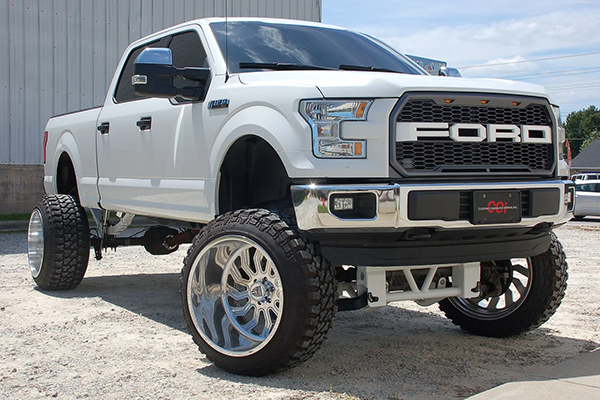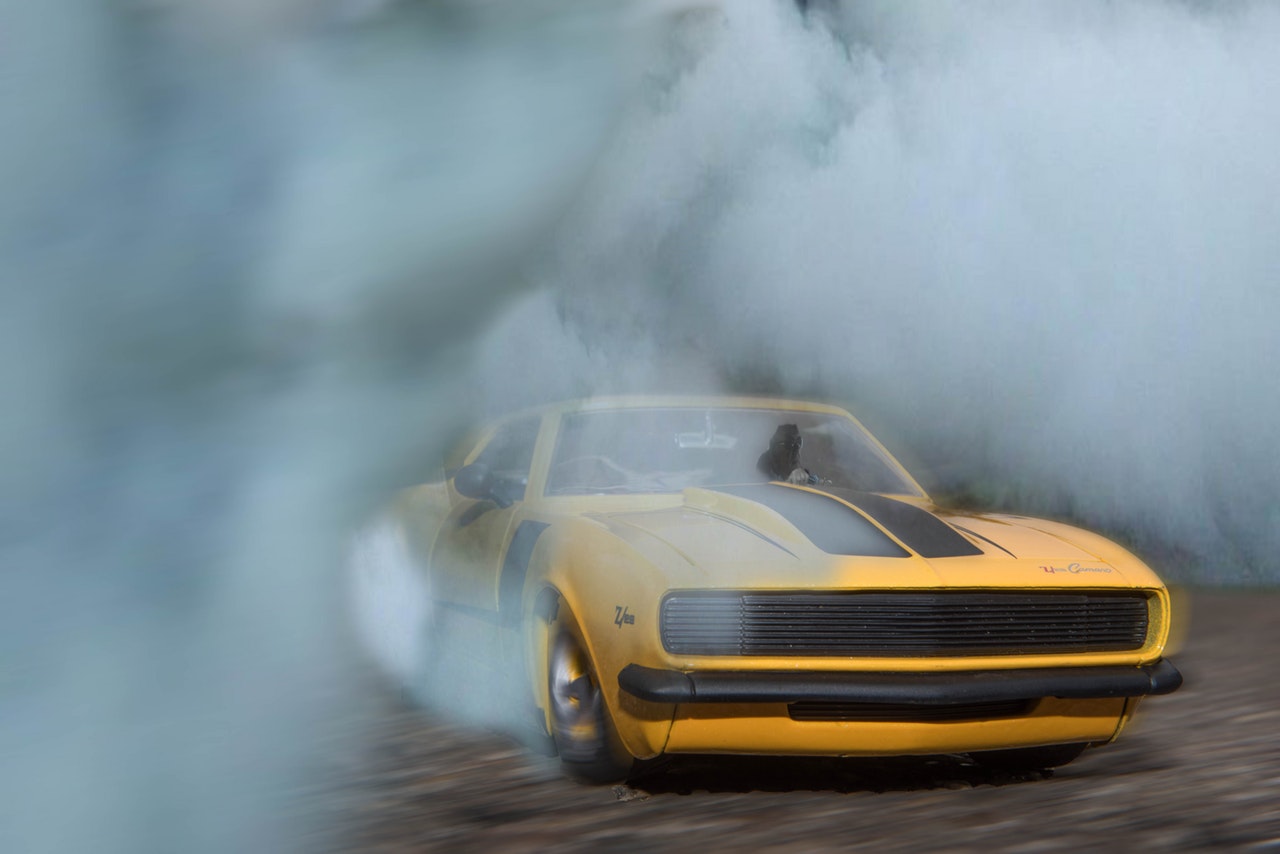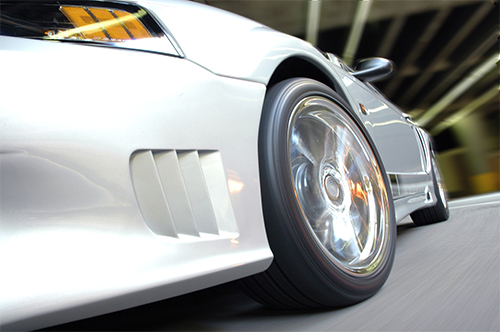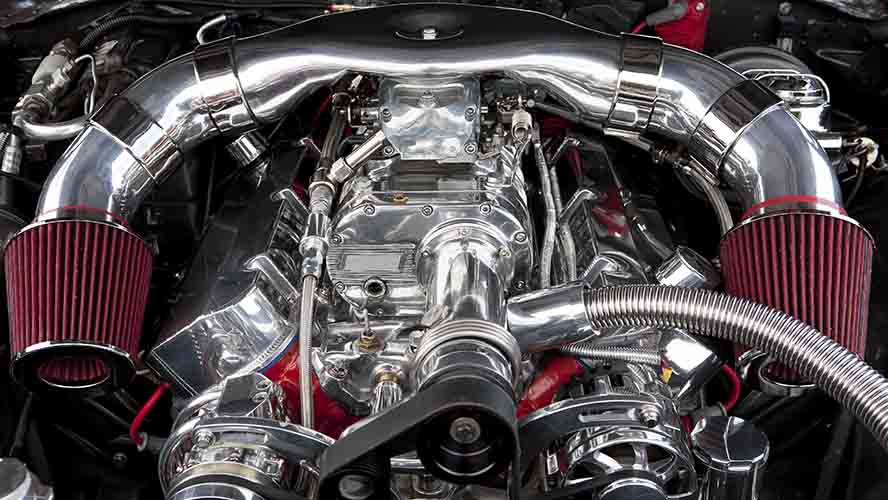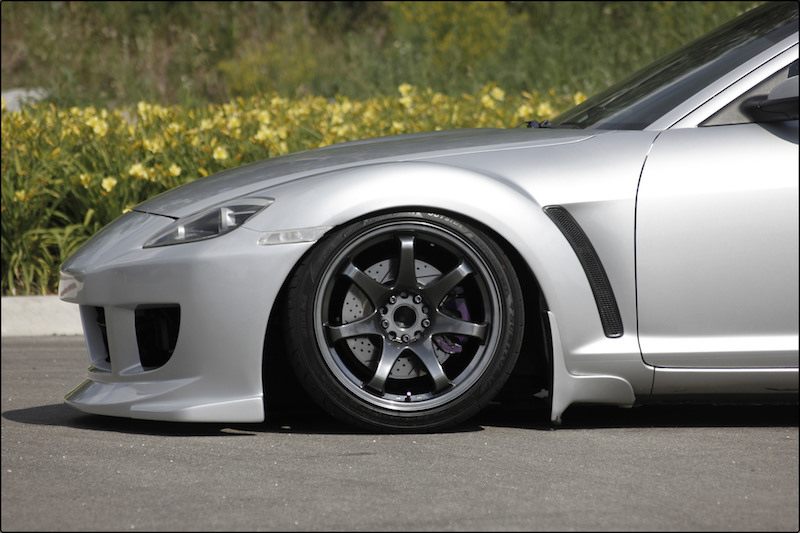A suspension's design is a compromise between comfort and performance. But sometimes that balance is off. In '60s and '70s muscle cars, the suspensions were a bit primitive and weren't ever made to handle or corner well. Lowering the vehicle can go a long way toward enhancing handling performance. But there's a right way and a wrong way to lower your car.

Source | Mike Aguilar
Don't cut coils; use drop springs

Source | Advance Auto Parts
Whether your car has coil springs and shock absorbers or MacPherson struts, one method of lowering that many people use is to remove the coil springs and cut them. This will lower the car. It will also weaken the coil spring, however, and change the spring's rate. In many cases, cut coils will no longer have the strength to support the vehicle and can even break or sag due to the heat caused by cutting the coils. Another problem with cutting coils is that you can't be sure if the height adjustment will be the same on both sides.
Advance Auto Parts carries a full range of drop/lowering coil springs for a wide range of muscle and sports cars. Drop springs, also known as lowering coils, are not hard to install and are ordered with the specific suspension drop desired. For example, you can order lowering coils for a '73 Camaro or '71 Mustang Fastback and specify the exact amount of drop you want.
Drop spindles
Installing drop spindles is the method of choice for most fabricators. The spindle is between the upper and lower control arms (or lower arm and MacPherson strut) that the wheel rotates on. This can be replaced with one that is engineered to lower your car, keeping your suspension geometry the same.
Spindle or spring replacement requires special tools and caution
Coil springs are under enormous tension, even with the front suspension raised and the wheels off the ground. Treated without the respect they demand, they can cause serious damage. Besides hammers, wrenches, a jack, and stands, you'll need a couple specialized tools to swap springs and/or spindles. These are:
The procedure for changing coil springs and spindles are similar, to a point. The front end has to be raised and the wheels have to come off. On cars equipped with disc brakes, the rotors and calipers need to come off and the calipers suspended so as not to damage the rubber brake lines. The shock absorbers come out next, followed by the installation of the spring compressor. Finally the upper and lower ball joints can be separated from the steering knuckle/spindle assembly, allowing the removal of the assembly. On some cars the new spindle will have to be mounted to the steering knuckle once the old spindle is removed. The new spindle can now be installed and the front end can be reassembled by reversing the disassembly process.
Convert to Coilovers

Source | Advance Auto Parts
Coilovers are performance suspension parts that replace the shocks and coil springs or the MacPherson struts in your front suspension, and represent a significant update to your muscle car's suspension. They combine the shock absorber and coil spring in a single assembly. The coilover body is threaded and the bottom of the coil rides in a pocket (known as the spring perch) that can be adjusted up or down to raise or lower your vehicle. Making coilovers an even more appealing option is the fact that most can be adjusted to give a firmer or softer ride, as well as to lower the vehicle.

Source | Advance Auto Parts
Coilovers are also available to replace the rear shocks on most cars. Aftermarket brackets are available that give you as many as five lowering mounting positions to choose from to help adjust your car's rear ride height without compromising comfort or safety.
Air Ride Suspensions Give a Full Range of Ride Height Adjustment
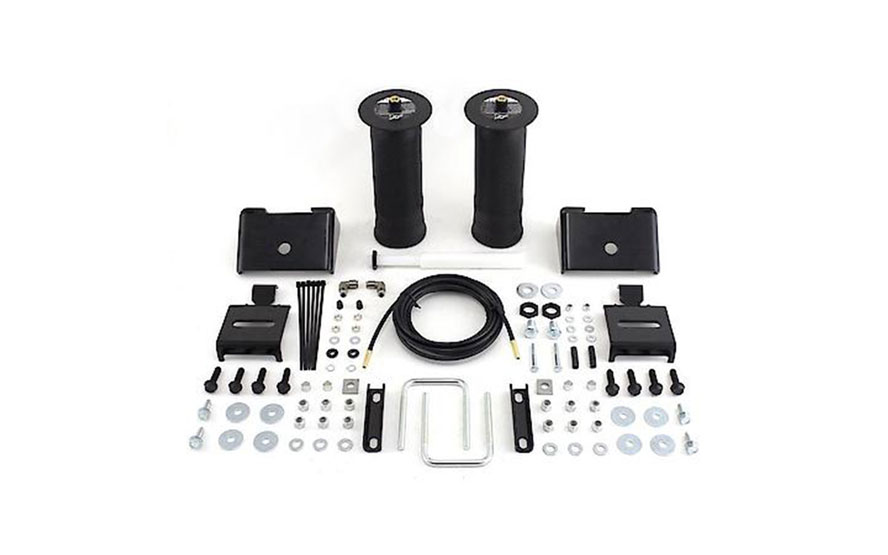
Source | Advance Auto Parts
Out of the methods mentioned above, only coilovers give you any adjustability. But you can only adjust ride height and firmness from under the car. Air ride suspensions give you a full range of ride height options and are adjusted using switches inside the passenger compartment.
An air ride suspension not only allows you to lower your sports car to the height you want but also allows you to raise the vehicle when you need to, like for speed bumps or potholes. Air rides—sometimes known as air bags—are installed in place of the coils and come in kits for all four wheels. Like coilovers, air ride suspension systems take the place of the stock coil springs and shock absorbers. The downside of air ride suspension systems is that they can be tricky to install and maintain, and the air bags and lines can fail over time.
Lowering a Leaf Spring Rear Suspension

Source | Advance Auto Parts
Leaf springs are used in the rear end of most rear wheel drive vehicles with solid axles. These are mounted to the frame in front of the rear wheels and just behind the rear bumper. Rear leaf springs can be de-curved or de-arched to lower this type of suspension. You have the option of taking them to a specialized machine shop for this or you can buy de-curved lowering leaf springs.
The rear mount on most leaf springs is connected to a bracket known as a shackle. Depending on how these are arranged, you can lower a leaf spring suspension by installing a longer or shorter shackle.
Another option for lowering a leaf spring rear suspension is with what's known as a flip kit and/or blocks. A flip kit allows you to flip where the leaf springs mount to the axle housing and mount the axle on top of the springs. This can lower the car up to three inches. A flip kit can be coupled with lowering blocks to space the mounting plate farther away from the axle to lower the vehicle even more.
When dealing with leaf spring suspensions, one thing to keep in mind is suspension and axle tube travel. If you go too low, the axle tube will bang against the bottom of the frame. You'll need to cut and weld a C-notch in the frame rails to give the axle housing clearance for full suspension travel if this happens.
One More Leaf Spring Option Not for the Fainthearted
If you're good with welding, another option to lower a leaf spring rear suspension is by relocating the mounting points for the leaf springs. This is not a project to undertake lightly, even if you're good with a welder, because it means cutting into the underside of your car and possibly compromising its structural integrity if you don't get it right. This method requires that the front leaf pocket be cut out and moved up higher in the car. Attention must be paid to ensure that the suspension is still able to move without any obstructions after the spring pocket is relocated.
NOTE: when changing the ride height of a vehicle, you're likely to notice some compromise in ride quality, and, of course, you'll need to be more careful of dragging on speed bumps, potholes, and driveway entrances.
